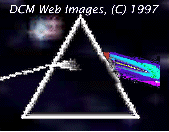
A chronology of 1989 Tianmenan Massacre:
April 15: the death of disgraced secretary general of the Communist Party (CCP) Hu Yaobang, who was toppled from power two years earlier for failing to curb small-scale democracy protests. Upon his death, wall posters began appearing immediately on university campuses.
April 17: Some 700 students amass on Tiananmen Square in the first protest.
April 22: Over 200,000 students converge on the square for Hu's funeral which takes place in the cavernous Great Hall of the People adjacent to the square.
April 25: The People's Daily calls the protests a "plot" against the regime.
April 27: Protest marches, beginning in the university district, break through police barriers and wind toward Tiananmen Square 15 kilometers (nine miles) away. -- May 4: Another huge march to Tiananmen Square commemorates the 1919 May Fourth Movement, when Chinese students first stood up for democracy.
May 5: CCP party secretary Zhao Ziyang indicates a willingness to hold a dialogue with the students.
May 13: Beginning of a hunger strike by hundreds of students who camp on Tiananmen Square.
May 15: The historic visit of Soviet leader Mikhail Gorbachev is disrupted by the protests.
May 17: More than one million people gather on the square.
May 18: Prime Minister Li Peng meets with student leaders in talks televised nationally. But during the meeting the students reject the talks saying they were not a dialogue "on equal footing" between the Chinese people, but a teacher lecturing his pupils.
May 19: The last public appearance of Zhao Ziyang, who attempts to convince the students to leave the square.
May 20: Li Peng proclaims martial law. In the following days truck loads of soldiers are prevented from entering the city from the suburbs by human barricades of ordinary people.
May 25: Some 100,000 workers join the protests and demand the resignation of Li Peng.
May 26: Zhao Ziyang is placed under house arrest for opposing martial law.
May 29: Students from the Academy of Fine Arts erect a styrofoam statue of liberty on the square and across from the portrait of Mao Zedong.
June 1: A "spontaneous" demonstration supporting the CCP is overwhelmed by students.
Night of June 3 and 4: The 27th Army, supported by tank columns, open fire on protesters, which begins days of street battles in Beijing and months of political repression nationwide resulting in summary executions and 15,000 arrests.
June 5: A sole protester stops a column of tanks for half-an-hour. The US announces an embargo on the sale of arms to China.
June 8: Beginning of the return to normalcy as some buses begin to run their routes.
June 9: Deng Xiaoping congratulates the army on national television and announces that "no one died" on Tiananmen Square.
June 24: A plenum of the CCP Central Committee purges Zhao Ziyang and names Jiang Zemin, the number one of the Shanghai party, as his replacement'
June 30: Beijing mayor Chen Xitong announces that "many dozens" of soldiers were killed during the turmoil and 6,000 soldiers wounded, while some 200 civilians, including 36 students, were killed and 3,000 injured. Independent sources estimate between 1,000 and 3,000 people were killed.




